Your Tuesday Culture Scroll
feat. George IV's tapestries & our Ralph Lauren Black Friday buys
21st & 18th reports on culture. Covering art, history and fashion and featuring interviews with voices in fashion and leaders in the arts. Written by Lauren Lynch Wemple (@lolynchwemple). Follow 21st & 18th (@21stand18th) on Instagram.
ART & HISTORY
Today, we’re discussing tapestries. Specifically, the 30 tapestries purchased by King George IV in 1825 when he decided Windsor Castle needed ‘refurbishing1’.
Who was England’s George IV?
In short, George IV (b. 1762 - d. 1830) was the “Mad King’s” son and heir who assumed the position as regent in 1811 at the age of 48, when his father was deemed too ill to govern. In 1820, he ascended the throne as George IV after his father’s, George III, passing.
George IV’s reign was short lived, at a decade, and while he had an atrociously muddy personal life2, he contributed a great deal to the Royal Collection by way of art and in the commissioning of great architectural projects. Specifically, George IV built the Royal Pavilion in Brighton and majorly transformed both Windsor Castle and Buckingham Palace. It’s also said that George IV’s personal interest in pageantry influenced much of the ceremonial pomp (ie. the Trooping the Colour parades and Buckingham Palace balcony waving) the world still ooh’s and ahh’s at today.
Back to George’s tapestries
In 1825, after four years on the throne, George IV purchased 30 French tapestries for Windsor Castle, the traditional seat of British monarchs that sits about 25 miles from London and was originally built in 1070 by William the Conqueror, with the goal of bringing the royal space up to snuff and on the level with being one of the homes of the British monarch. These tapestries were likely different series, ie. a number of scenes that together tell a story, and all featured a woven border around the scene, sort of like a pseudo picture frame, which was made popular by the French3 .
To dial it back a bit, a tapestry is a woven structure formed with threads running in both directions rather than top to bottom or left to right. Despite modern textile and weaving technologies, the techniques involved in tapestry weaving have barely altered in thousands of years (historians have dated fragments of tapestry, which they believe is one of the first, found in China to 300 BC). Weaving a tapestry is an incredibly laborious process which requires exceptional attention to detail and architect-like planning skills.
Interestingly, tapestries, while being incredibly entrancing works of art, have always been multi-purpose, even in the most palatial of palaces: They are decorative and exhibit the wealth and status of a household but also served as large scale insulation of sorts in drafty castles, manors and palaces. Tapestries continue to be highly sought after by art collectors and prized in stately homes and official government or royal residences today. See below for an example of a tapestry purchased by Britain’s current monarch, Charles III.

Let’s look at one of George IV’s tapestries
For a guy who had a horribly messy and unsuccessful love life, George Four had taste. (At least, he and I appear to share the same taste in tapestries) All of the 30 tapestry panels he acquired in 1825 for Windsor Castle were French, woven at the Gobelins Tapestry Factory, which was originally founded by Louis XIV in Paris in 1662. Louis’ goal? To supply the French royal palaces with the highest quality of textile decor.
Gobelins tapestries from the late 18th century are characterized by their highly stylized scenes that were almost warped in perspective as such detailed depictions of highly ornate classical and historical scenes made in thread and fabric have a different tactility than paint. For example, the below panel, The Story of Jason, one of eight panels that made up a series of scenes recounting the story of ancient Greek hero, Jason, and his wife Madea, is detailed like a Rococo or classical painting, but the viewing experience is gooey-er, than looking at a painting. The woven threads give it a sheen and depth that feels three dimensional but looks so obviously contrived. It’s a delightfully confusing feast for the eyes. This tapestry was woven c. 1776-9 in Paris, France.

Sadly for the Bourbons yet happily for George IV and his ancestors, after the French Revolution, in the early 19th century, the eight panels in this series from Gobelins, and many others, were put up for auction and snapped up by the Brits4.
Fun Fact: The Gobelins Tapestry Factory is still in operation in Paris today. The artisans produce a select number of woven goods each year and their historic location, in the 13th arrondissement, is available to visit and tour. Learn more here, Manufacture des Gobelins.
FASHION
Two words: Ralph Lauren.
Am I boring? Predictable? If you know me you know I wear a lot of the same labels, with Ralph Lauren being one of them. I am a sucker for Ralph Lauren men’s shirting, vintage Ralph Lauren Collection (2001 - 2005 bias cut gowns are my jam) and Ralph Lauren sheepskin outerwear (ask me about my prized possessions in the comments).
It seemed right to note Ralph Lauren as this week’s Fashion obsession because it is about to be the Black Friday sale of all sales: the Ralph Lauren Black Friday Sale, which is really the best Black Friday sale on the planet. I kid not! Medium Bellport bags for under $500, wool men’s suiting for under $800, polo shirts for $32!!!!!! Run don’t walk. At this stage in my life, I don’t do much Black Friday shopping, it’s dumb and feels like peer pressure in high school - just say no - and I’m not into doing what everyone else is doing. What I am into is snagging Ralph Lauren classics for 20 - 40% off plus free shipping. That’s just called being intelligent.
Pro tip: Ralph Lauren’s candles are to die for, come in beautiful plaid boxes, perfect for a holiday hostess gift, and are typically included in Black Friday markdowns. The Bedford Candle (Regularly $75, Currently $45) is my personal favorite.
What will I be buying from Ralph Lauren this Black Friday?
This Black Watch Plaid Double-Breasted Coat (Regularly $380, Currently $228)
because I have been on the hunt for a calf length officer’s coat in navy or plaid since Kate Middleton married Prince William in 2011 and wow-ed the world with her collection of well fitted officer’s coats. This coat just feels like the right buy - you’ll see me in it all Christmas season plus the winter months. I also feel this is a great investment given how versatile it is for styling, I’m imaging it over: tailored denim, a polo shirt and wool sweater, a pair of joggers while on a long flight AND a silk gown for an evening or event out. Like the Swiss army knife of coats.
A Medium Bellport Bag in Cuoio or Black Leather (Regularly $698, Currently $419)
I have a number of Ralph Lauren’s Bellport Bags but all in the mini size, which is such fun and great for travel or being onsite at events or creative shoots, however it’s time I replaced my Louis Vuitton Never Full (I have the striped beige and brown one that is a bit more elegant but nonetheless screams 2010 teenager) and I have had my eye on a Medium sized leather Bellport Bag for two years. Why? First off the bag is reversible and the suede lining is great when you wish to transition from week to week-end. Next, the shape and size are large enough to comfortably carry an iPad or MacBook Air but not too large so as to look like a diaper bag. Bonus points to RL for ensuring the length of the Bellport straps are just long enough to sit comfortably on your shoulder but also to hang lazily on your forearm. Love you, Uncle Ralph.
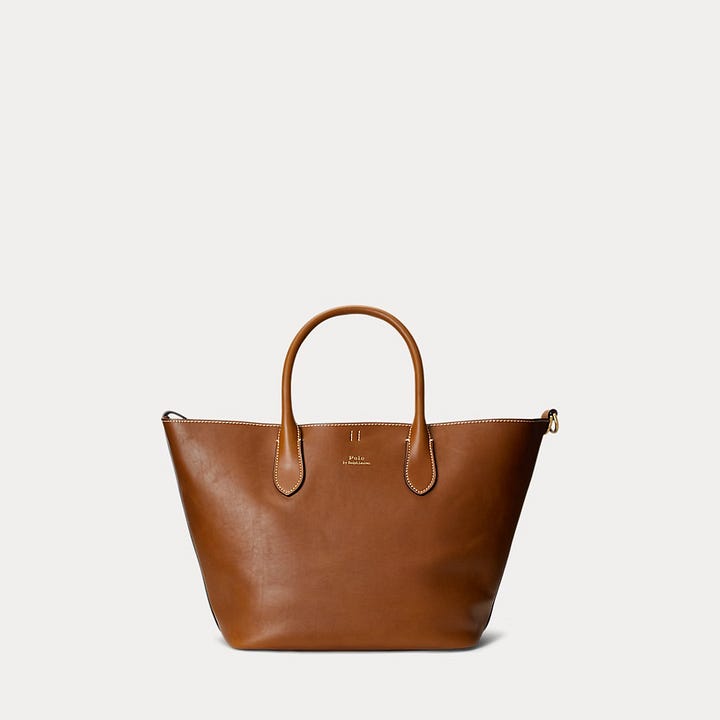

With that, I’ve decided, this Black Friday, it’s time. I’m buying the bag. The question is do I want to be the cognac girl in flaxen combed wool? Or the city chic woman who wears a lot of black on black (I really hate black blazers tho)? Vote below, curious which you think I am.


I’m on the fence about this Double-Breasted Wool Melton Trench Coat from Polo Ralph Lauren (Regularly $798, Currently $479)
This coat feels like it needs to come home and live with me, but do I need it? I don’t currently have a tan colored wool peacoat, and these heavy, warm wool coats are very malleable. When you’re traveling in the winter, or late autumn, this is the kind of coat you want to bring with you: A one hit wonder with the versatility for any event, from casual to formal, time of day and culture are both moot points too (ie. I dress very differently when I visit Japan vs. Austria vs. Denmark and this coat could really do it all). If you think I should adopt this Double-Breasted Melton Coat, please hit me up in the comments below.
My advice to you: Beware the Black Friday shopping frenzy! I only allow myself a browse at Ralph Lauren and then take myself off to the horse races at Del Mar (@delmarracing) for their Bing Crosby Season - it’s much more fun to throw away your money on horses rather than cheap imported clothing you don’t need (lol).
Cheers & Happy thanksgiving to my American Readers & Patrons!
- LLW
Man, how I wish I had the social standing and income to decide one of my castles needed a quick scrub up *sigh*. Read more about George IV’s, and other British monarchs’, tapestry shopping sprees, here.
George IV had notoriously (also secretly AND illegally because royals couldn’t marry Catholics) married a Roman Catholic widow, Mrs Fitzherber, in 1785. In 1795, he officially married Caroline of Brunswick, but the marriage was a failure and he attempted (unsuccessfully) to divorce her. Caroline died, a year after he ascended the throne, in 1821, and their only child, Princess Charlotte, died giving birth to a stillborn child, in 1817, at the age of 21. Charlotte’s death rocked England and gave way to major uncertainty as to who was the heir to the British throne (spoiler alert: Hello, Queen Victoria).
It’s always the French - they were the first influencers
Surely, Louis Quatorze is rolling in his grave at the news of this




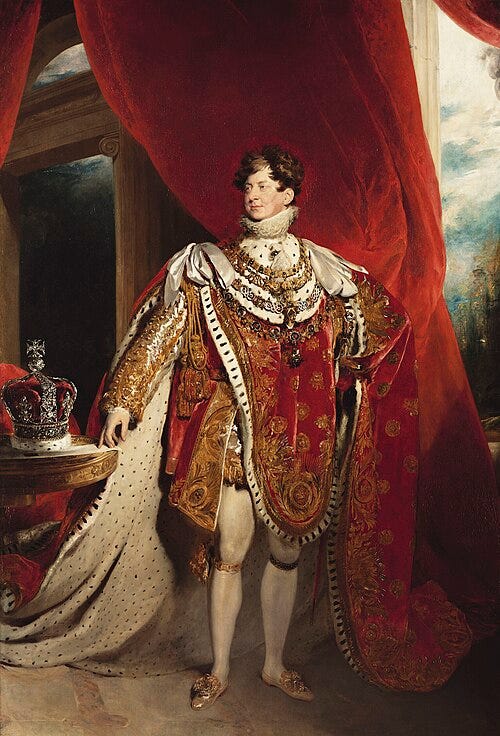
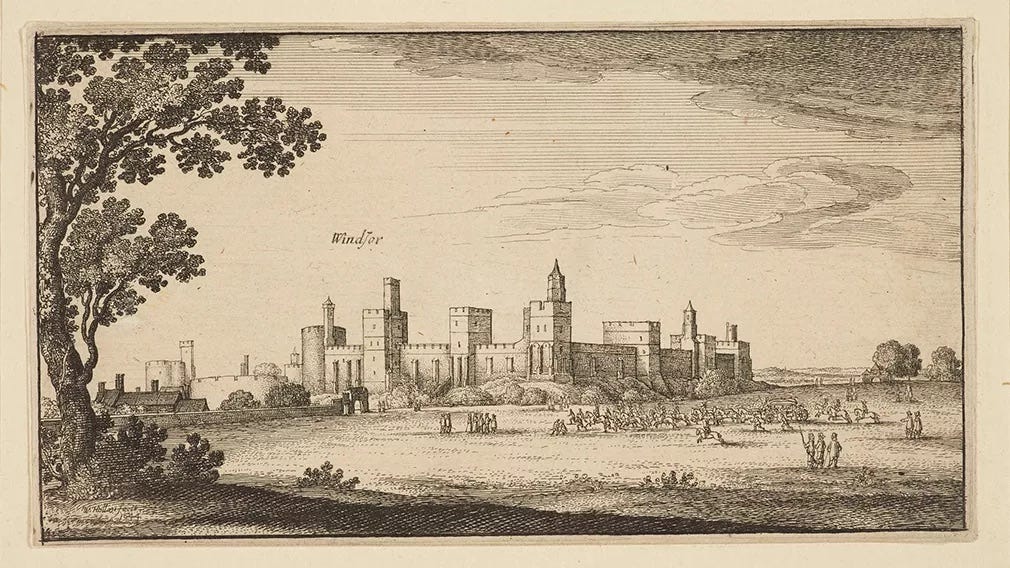
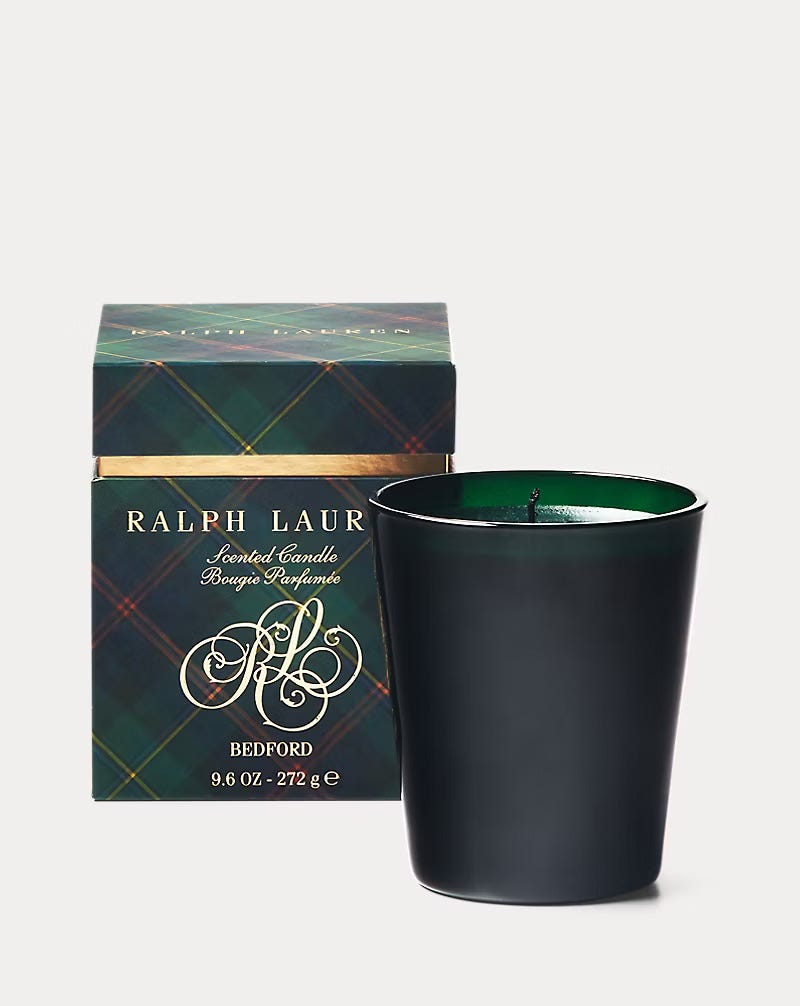

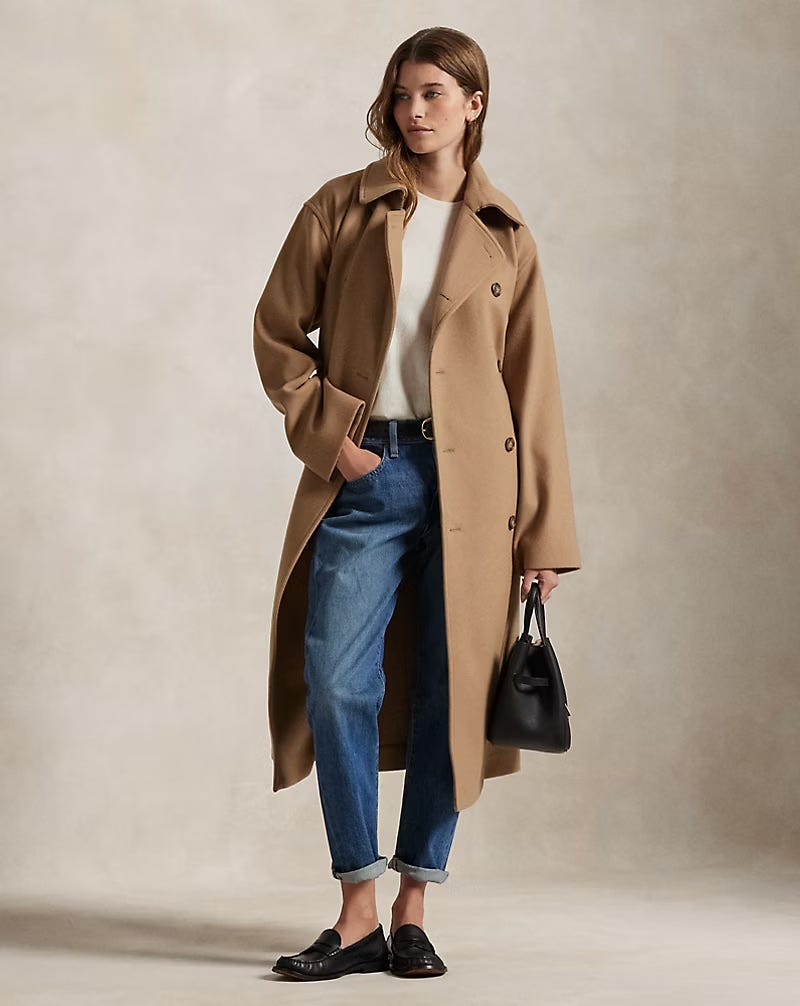

What are your prized possessions?
Surely the question is not which bag to buy but which one to buy THIS year. You can buy the other one next year.